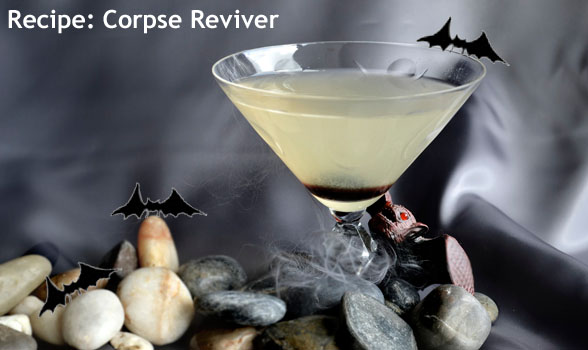


CORPSE REVIVER 2 IMBIBE SERIES
De Fleury apparently attempted to add on to the series with a Corpse Reviver #3 in “1700 Cocktails for the Man Behind the Bar” (1934). “It just doesn’t seem to be as well received.” “It’s no less effective, I’m sure,” she says, with a laugh. Sterling serves the Corpse Reviver #2 regularly but shies away from Craddock’s Corpse Reviver #1. He probably said ‘here, try this’ and it just took off.” I’m guessing that because of his long presence in a bar he probably became that kind of funny, iconic guy who has that great sense of humor. “I don’t know what Harry Craddock’s personality was like, I wish I knew him. The Corpse Reviver #1 also comes with a note by Craddock: “To be taken before 11 a.m., or whenever steam and energy are needed.” “I think that’s part humor, part truth for that era,” says Lucinda Sterling, bartender and managing partner at Middle Branch and Seaborne. “I have had a number 1 also, but believe that number 2 fits the taste profile best for an uplifting style of cocktail.” McGurk theorizes that the Corpse Reviver #2’s resurgence is at least party due to Cocchi Americano’s recent return to the market.Īlthough the Savoy will gladly make you a Corpse Reviver #1, McGurk shares the majority preference for the #2. “Sometimes they even have notes in the book from a visit many years before.” His note after the Corpse Reviver #2 recipe reveals a bit of his humor: “Four of these taken in quick succession will unrevive the corpse again.”ĭeclan McGurk, the current American Bar manager at the Savoy, says that patrons often bring in their own copies of Craddock’s book. “The Savoy Cocktail Book” is his most enduring legacy, a compilation of almost 40 years of cocktail recipes, including many of his own devising. He started out working at the Dispense Bar, but was head barman at the American Bar by 1925. Originally from America, he came to the Savoy in 1920, shortly after Prohibition began. In 1930, Harry Craddock came on the scene with the Corpse Revivers #1 and #2. They suggest filling a wineglass half with brandy, half with Maraschino and adding two dashes of Boker’s bitters. There are mentions of layered Corpse Reviver drinks (including such ingredients as creme de noyau, maraschino, and yellow chartreuse) said to be on Parisian menus by 1863, but the first Corpse Reviver recipe appears to be from “ The Gentleman’s Table Guide” by E. Usage can be seen as early as 1861 in London’s Punch magazine. In 1889, a charming slang dictionary describes a “Corpse-reviver” as “a dram of spirits” with an example of usage from The Sporting Times: “There was a general rush for wet towels and corpse-revivers.” The term covered a very diverse group of mixed drinks, mostly intended to be hair of the dog remedies. 4, aka Savoy Corpse Reviver: Shake 1 ounce each of brandy, Fernet Branca, and white crème de menthe with ice and strain into a cocktail glass.When you hear “Corpse Reviver,” your mind likely travels to the Corpse Reviver #2 from Harry Craddock’s “The Savoy Cocktail Book.” But if you were speaking colloquially in the late 19th and early 20th centuries, asking for a corpse reviver was equivalent to telling your friends you’d spent the previous evening out on the town. Alternatively, shake 1 ounce each of brandy, Campari, and triple sec with 1/2 ounce of lemon juice and ice, straining into a cocktail glass. 3: Shake 1 ounce each of brandy, curaçao, and maraschino liqueur with ice and strain into a chilled cocktail glass. 1: Stir 1 1/2 ounces brandy, 3/4 ounce Calvados or other apple brandy, and 3/4 ounce sweet vermouth with ice. But if you're looking into mixing interesting and alternative brunch cocktails, give a try to other revivers: 2 just has a more interesting flavor profile. This may be due to the fact that modern drinkers tend to prefer gin over brandy, though many will also tell you that no.

There are many classic corpse reviver recipes, though only numbers 1 and 2 have survived the test of time. Today, the corpse reviver no.


 0 kommentar(er)
0 kommentar(er)
